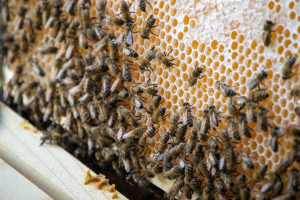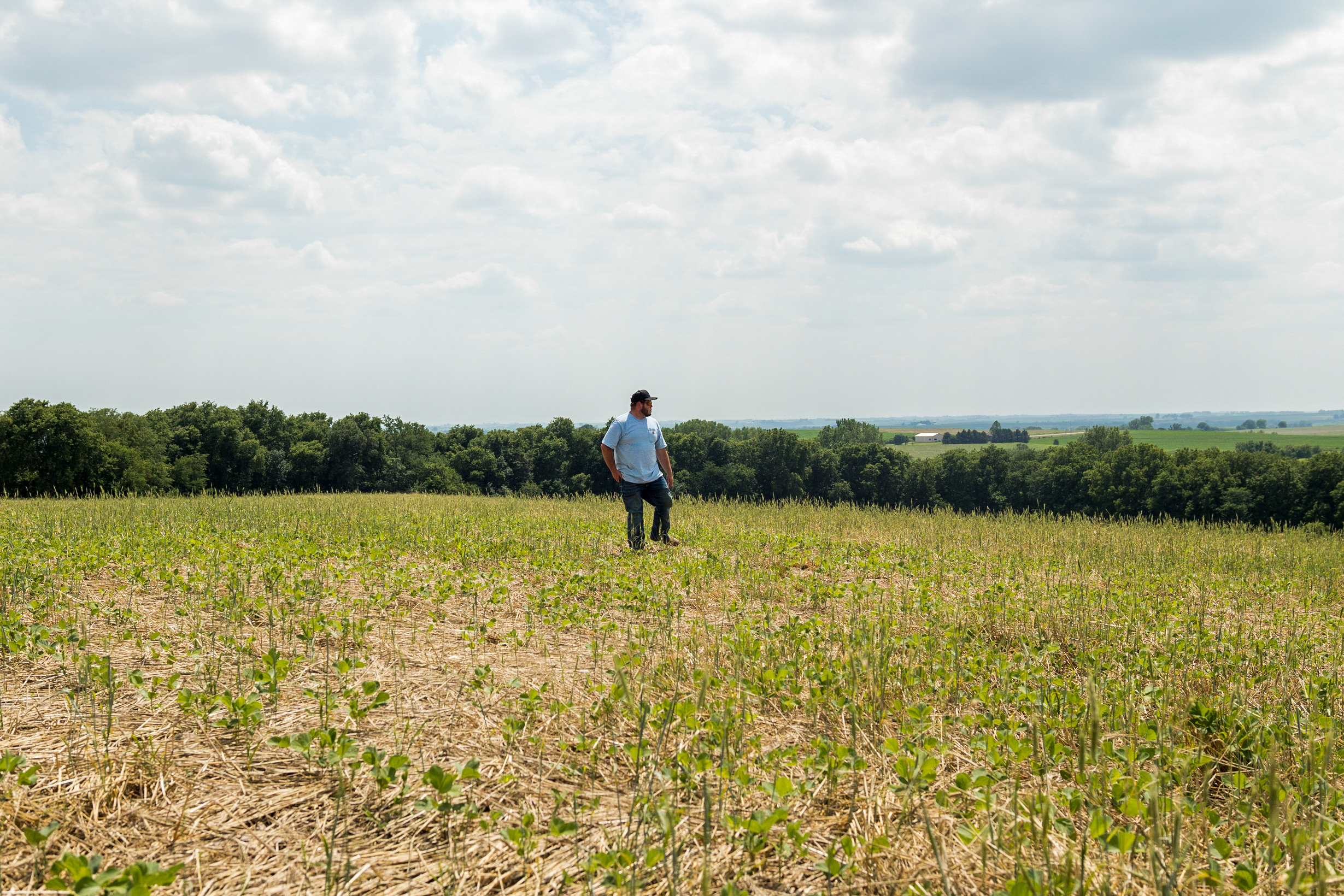Iowa Tribe of Kansas and Nebraska’s Center for Excellence for Regenerative Native Agriculture aims to diversify tribal farm lands, revive indigenous practices that mimic Mother Nature
For the Iowa Tribe of Kansas and Nebraska, preserving its 12,000 acres—particularly its 3,500-4,000 farmed acres—is an urgent priority. Conventional agriculture’s input-driven monoculture and topsoil depleting practices, with increasing climate disasters, pointed to a need for a 180-degree turn. When beehives moved onto the land and quickly died off from neonicotinoid pesticides, Tribal Chairman Tim Rhodd had to admit that the entire system required a “reverse engineering” solution.
A nearly $5 million USDA grant and the vision of one Native tribe have created a vehicle to transform the reservation’s farming system to a profitable, self-sufficient, diverse ecosystem that can sustain livelihoods, the soil and environment, and the longevity of the land for generations to come. The project, the Center of Excellence for Regenerative Native Agriculture (CERNA), will launch this spring and ideally, through participants and partnerships, impact thousands of acres beyond its own. More importantly, returning to older indigenous practices that mimic Mother Nature will bring the tribe into “alignment with who we are as a people,” Rhodd said.
Going back to move forward
At one point, The Iowa (“Ioway”) Tribe’s land spread over 7 or 8 states; today it occupies a corner straddling Northeast Kansas and Southeast Nebraska, along the Missouri River corridor. The farm operation started in the 1960s-80s, using 100% conventional agriculture to produce commodity corn, soybeans, and other commodity crops. But it wasn’t working, Rhodd realized; the soil wasn’t healthy, and farmers were making a pittance on the dollar for crops produced, due to middlemen. The Tribe hasn’t been able to buy back the land they didn’t own—and thus the farming area is checkerboarded, making it difficult to incorporate regenerative whole system changes.

The Iowa Tribe has 100 beehives
In search of a better way to farm, Rhodd attended a Soil Health Academy and learned from Gabe Brown, co-founder of the Regenefied certifying body and regenerative agriculture pioneer. He went from “chasing yields” to learning how to use cover crops, no-till, rotations, adaptive grazing, and grow regenerative crops. Ioway Farms soil tests regularly and has been able to save by reducing nitrogen applications. “In the last two years, we’ve become 100% regenerative,” he said. “We started small, just 200+ acres and a non-GMO soybean.”
The farm team—a group of 15 to 20 resilient workers willing to try new things—is diversifying its products, toward more non-GMO vegetables to add to row crop grains. It produces Black Angus beef, eggs from several hundred chickens, industrial hemp used for livestock feed, CBD tinctures, and for manufacturing SOJE cigarettes made from regeneratively grown hemp (no nicotine, tobacco, or additives)—as well as 100 beehives and market products under the Ioway Bee Farm brand. A non-GMO soybean crop with no inputs is supplying a tofu manufacturer and bringing in an average of $42/bushel. Asian carp (an invasive species) are fished from the Missouri River, and ground into a natural fertilizer that replaces synthetic anhydrous ammonia with an organic liquid nitrogen.
USDA grant—a golden opportunity
The United States Department of Agriculture (USDA)’s Partnerships for Climate Smart Commodities (PCSC) program has invested $3.1 billion in 141 grant projects to promote production of climate-smart commodities—strengthening producer incomes while improving soil health, water quality, and biodiversity. The Iowa Tribe of Kansas and Nebraska will use their $5 million grant over a 5-year period, through CERNA initiatives that not only will educate farmers on regenerative practices but provide direct financial support to help with the transition to sustainable systems. CERNA will offer 2 cohorts each of those years for Native and non-Native students. Classes and workshops will target any producer in the Missouri River corridor who impacts reservation land, training in climate-smart techniques improving soil, microbiology, and ecosystem balance. Financial support may include direct payments, technical assistance and farm management help, contracts with buyers, and regenerative certifications from Regenefied to raise product quality and revenues.
“We have to first educate the Tribe’s farmers and landowners on what we are doing, then incentivize them so they’ll be more open to changing their mindset from conventional farming,” Rhodd said. “It’s not easy to do that, and financial boons help a lot. We also want to attract a younger generation of farmers. The markets are there for us if we get the soil healthier.”
Partners on the CERNA project include the Sac and Fox Nation of Missouri, the Kickapoo Tribe in Kansas, oatmilk manufacturer Oatly, the Intertribal Ag Council, Deere & Co., and the Regenefied Network. One partner, Terramera, will measure the environmental benefits of the climate-smart commodities produced.
A rewarding collaboration with Pacha Soap Company creates a strong model for the benefits of direct sourcing—the Tribe provides sunflower seeds to Pacha, which makes oil for its soaps. Andy Thornton of Pacha says that by investing in sunflower seeds instead of just buying oil, Pacha is promoting regenerative ag and pollinator populations. “We want to contribute and build supply chains that will help solve macro problems,” Thornton said. “We think ingredients grown in better soil are better.” Iowa Tribe of Kansas and Nebraska plans to develop their own soap brands, and the two will share an extraction facility.
Respect the land, it will give what you need.
Rhodd is an advocate of slowing down, of taking time to find solutions. To him, farming regeneratively is the key to a healthy environment and healthy tribe—it is a personal responsibility. “We as Native people know about long journeys. Standing on the shoulders of our ancestors, we need to respect every living thing as we create a fully functioning, self-sufficient community. We must protect our natural resources, work with Mother Earth if we expect to create nutrient-dense food, have clean water. This is the only land we have…if we treat it well, it will take care of us.”









